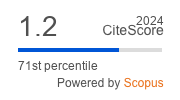The Tower of Babble: Mother Tongue and Multilingualism in India
DOI:
https://doi.org/10.29038/eejpl.2017.4.1.shaKeywords:
language, bilingualism, multilingualism, mother tongue, linguistic imperialism, Constitution, schedule.Abstract
Since ancient times India has been a multilingual society and languages in India have thrived though at times many races and religions came into conflict. The states in modern India were reorganised on linguistic basis in 1956 yet in contrast to the European notion of one language one nation, majority of the states have more than one official language. The Linguistic Survey of India (LSI) conducted by Grierson between 1866 and 1927 identified 179 languages and 544 dialects. The first post-independence Indian census after (1951) listed 845 languages including dialects. The 1991 Census identified 216 mother tongues were identified while in 2001 their number was 234. The three-language formula devised to maintain the multilingual character of the nation and paying due attention to the importance of mother tongue is widely accepted in the country in imparting the education at primary and secondary levels. However, higher education system in India impedes multilingualism. According the Constitution it is imperative on the “Union to promote the spread of the Hindi language, to develop it so that it may serve as a medium of expression for all the elements of the composite culture of India … by drawing, wherever necessary or desirable, for its vocabulary, primarily on Sanskrit and secondarily on other languages.” However, the books translated into Hindi mainly from English have found favour with neither the students nor the teachers. On the other hand the predominance of English in various competitive examinations has caused social discontent leading to mass protests and cases have been filed in the High Courts and the Supreme Court against linguistic imperialism of English and Hindi. The governments may channelize the languages but in a democratic set up it is ultimately the will of the people that prevails. Some languages are bound to suffer a heavy casualty both in the short and long runs in the process.
References
- Basil, Bernstein. (1971). Class, Codes and Control: Theoretical Studies Towards a Sociology of Language. London: Routledge & Kegan Paul.
- Bialystok, E. (2001). Bilingualism in Development: Language, Literacy, and Cognition. Cambridge: Cambridge UP.
- Chambers, J. K. (2009). Sociolinguistic Theory: Linguistic Variation and Its Social Significance. Malden: Wiley Blackwell.
- Constitution of India [The]. (2007). Retrieved from: http://lawmin.nic.in/ coi/coiason29july08.pdf.
- Cummins, J. (2000). Language, Power and Pedagogy. Clevedon: Multilingual Matters.
- Dictionary of Quotations in Communications. (1997). L. McPherson Shilling and L. K. Fuller (eds.), Westport: Greenwood.
- Fishman, J. A. (1972). The Sociology of Language. An Interdisciplinary Social Science Approach to Language in Society. Rowley, MA: Newbury House.
- Gandhi, M. K. (1917). Hindi: The National Language for India. In: Speeches and Writings of Mahatma Gandhi, (pp.395–99). Retrieved from http://www.mkgandhi.org/ towrds_edu/chap15.htm.
- Gandhi, M. K. Medium of Instruction. Retrieved from http://www.mkgandhi.org/towrds_edu/chap14.htm.
- Giglioli, P. P. (1972). Language and Social Context: Selected Readings. Middlesex: Penguin Books.
- Gumperz, J. J., Dell H. H. (1972). Directions in Sociolinguistics: The Ethnography of Communication. New York: Holt, Rinehart and Winston.
- Haugen, E. (1966). Language Conflict and Language Planning: The Case of Modern Norwegian, Cambridge, MA: Harvard University Press.
- Hymes, D. (1974). Foundations in Sociolinguistics: An Ethnographic Approach. Philadelphia: University of Pennsylvania Press.
- Hymns of the Atharva-Veda. Tr. Maurice Bloomfield. In: Sacred Books of the East, 42, 1897. Retrieved from: http://www.archive.org/stream/ SacredBooksEastVariousOrientalScholarsWithIndex.50VolsMaxMuller/42.SacredBooks East.VarOrSch.v42.Muller.Hindu.Bloomfield.HymnsAtharvaVed.ExRitBkCom.Oxf.189 7.#page/n19/mode/2up.
- Jernudd, B. H. (1982). Language Planning as a Focus for Language Correction. Language Planning Newsletter, 8(4) November, 1–3. Retrieved from http://languagemanagement.ff.cuni.cz/en/system/files/documents/Je rnudd_LP%20as%20 LC.pdf.
- Kamat, V. The Languages of India. Retrieved from http://www.kamat.com/indica/diversity/languages.htm.
- King, K., & Mackey, A. (2007). The Bilingual Edge: Why, When, and How to Teach Your Child a Second Language. New York: Collins.
- Kosonen, K. (2005). Education in Local Languages: Policy and Practice in Southeast Asia. First Languages First: Community-based Literacy Programmes for Minority Language Contexts in Asia. Bangkok: UNESCO Bangkok.
- Lewis, E. G. (1972). Multilingualism in the Soviet Union: Aspects of Language Policy and Its Implementation. Mouton: The Hague.
- Linguistic Survey of India. George Abraham Grierson (Comp. and ed.). Calcutta: Office of the Superintendent of Government Printing, India, 1903–1928. PDF. Retrieved from http://dsal.uchicago.edu/books/lsi/.
- Macaulay, T. B. (1835). Minute dated the 2nd February 1835. Web. Retrieved from http://www.columbia.edu/itc/mealac/pritchett/00generallinks/macaulay/txt_minute_ed uca tion_1835.html.
- Mansor, S. (2005). Language Planning in Higher Education. New York: Oxford University Press.
- Mishra, Dr Jayakanta & others, PIL Case no. CWJC 7505/1998. Patna High Court.
- Peñalosa, F. (1981). Introduction to the Sociology of Language. New York: Newbury House Publishers.
- Sapir, E. in “Mutilingualism & National Development: The Nigerian Situation”, R O Farinde, In Nigerian Languages, Literatures, Culture and Reforms, Ndimele, Ozo-mekuri (Ed.), Port Harcourt: M & J Grand Orbit Communications, 2007.
- Simons, G., Fennig, C. (2017). Ethnologue: Languages of the World, Twentieth edition. Dallas, Texas: SIL International. Retrieved from http://www.ethnologue.com/country/IN.
- Stegen, O. Why Teaching the Mother Tongue is Important? Retrieved from https://www.academia.edu/2406265/Why_teaching_the_mother_tongue_is_important.
- “The Tower of Babel”. Genesis 11:1–9. The Bible. Retrieved from https://www.biblegateway.com/passage/?search=Genesis+11:1–9.
- Trudgill, Peter (2000). Sociolinguistics: An Introduction to Language and Society. London: Penguin.
- UNESCO (1953). The Use of the Vernacular Languages in Education. Monographs on Foundations of Education, No. 8. Paris: UNESCO.
- U P Hindi Sahitya Sammelan vs. the State of UP and others. Supreme Court of India 2014STPL(web)569SC. Retrieved from: http://judis.nic.in/ supremecourt/ imgs1.aspx?filename=41872.
- Whorf, B. L. (1940). Science and linguistics. Technology Review, 42(6), 229–31, 247–8.
Sources
- http://www.censusindia.gov.in/2011-documents/lsi/ling_survey_india.htm
- http://www.ciil-lisindia.net/
- http://www.ethnologue.com/country/IN
- http://peopleslinguisticsurvey.org/
- http://www.rajbhasha.nic.in/en/official-language-rules-1976
- http://www.ugc.ac.in/journallist/
- http://www.unesco.org/new/en/international-mother-language-day











 Creative Commons «Attribution» 4.0
Creative Commons «Attribution» 4.0